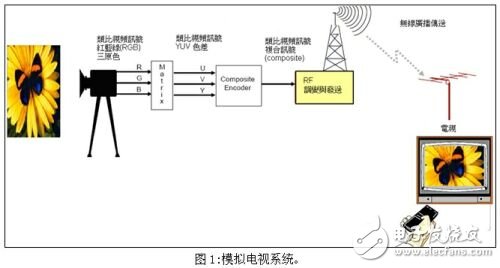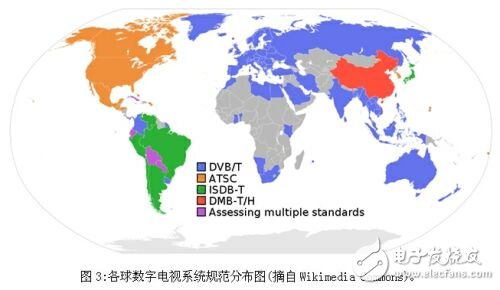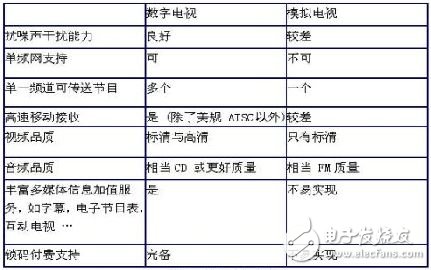Mobile TV is commonly known as mobile TV. Supported by digital technology, it broadcasts and receives TV programs through terrestrial or satellite TV signal broadcasting and ground equipment reception. Currently, TV signals are received through terminal devices such as mobile phones, multimedia players, vehicles, and USB receivers. Its biggest feature is to keep the TV signal stable and clear on the moving vehicle. The mobile TV can use a wireless digital broadcast television network (DMB), a cellular mobile communication network, or even Wi-Fi, WiMax, and the like. In China, DMB and cellular mobile communication networks (GPRS or CDMA) are mostly used. Now mobile TV has also added CMMB digital mobile TV technology independently researched and developed by China. During the 2008 Olympic Games, the related services have been provided. The system uses the combination of satellite and terrestrial network, “integration of heaven and earth, integration of stars and networks, unified standards, national roaming. "The way to achieve effective coverage of nationwide mobile multimedia broadcast television signals. (CMMB) uses high-power S-band satellites to cover 100% of the country's land, and uses S/U-band supplemental transponders to cover weaker satellite signals (using UHF terrestrial coverage to cover urban buildings) and use wireless mobile communication networks to construct return channels. To achieve interaction, form a one-way broadcast and two-way interaction, a combination of central and local, full network, seamless coverage system.
This article takes Lianyang Technology (ITE) AT9050 series chip as an example to discuss how to implement DVB-T digital TV receiving function on mobile phone, personal navigation device (PND) or portable media player (PMP).
What is analog TV and digital TV?
There are three main types of TV program broadcasts: satellite, cable, and Terrestrial. Terrestrial is the most feasible and cost-effective to support mobile reception, so the following will focus on wireless TV.
The TV programs that we usually see are analog TVs that use analog signals to transmit sound images, while digital TVs use digital encoding technology from the collection, recording, transmission, and reception of programs. With digital TV, viewers can not only see DVD-like images, but also enjoy the home theater-like sound effects. The number of TV channels has increased from dozens to hundreds of sets, listening to digital broadcasting, and diversifying. Professional and personalized multimedia services.
For the traditional analog TV system, please refer to Figure 1. The original image obtained by the camera is converted (optical image - "RGB-" YUV-"Composite), and then broadcast to the mass through the TV tower. The user receives the wireless signal from the antenna and presents the original portrait on the television. In addition, analog TV has three main formats: NTSC, PAL and SECAM depending on its video format and modulation.

Digital television is a system that uses digital signals to represent television image information and uses digital technology in the process of collecting, recording, processing, storing, broadcasting, transmitting and receiving television signals. What we are seeing on the TV now is the analog signal program, and the digital TV signal is the signal that the TV program transmits to the user's home through the cable TV network, satellite or wireless transmission, and is received by the set-top box by the TV or TV display.
Digital TV is very different from analog TV. The advantages of digital TV are mainly reflected in the technical level. First, the channel has been added, and four or five hundred sets of programs can be opened under conditions. Second, the image is clearer and the sound quality is higher. The viewer can enjoy the standard definition TV program of DVD video effect and CD audio effect on the ordinary TV set through the set top box. Third, the function is huge and rich. In addition to providing existing TV broadcast programs, digital TV can also provide many new services. The two most attractive points of digital TV programs are: first, specialization and objectification. Digital TV can open independent, professional, all-day channels, such as movies, cars, real estate, MTV, sports and other professional channels. Second, digital TV channels do not insert advertisements.
The digital TV channel can transmit multiple audio and video programs at the same time, and a multi-tasking device (MulTIplex) composite multi-channel program into a TransportStream, and then transmitted through ChannelCoding and modulation. The TV at the receiving end must have the ability to demodulate digital TV radio waves and MPEG code stream to display digital programs on the TV screen. Traditional analog TVs can watch digital TVs through a set-top box (SetTopBox).

At present, terrestrial wireless digital television systems all over the world have four different specifications, namely DVB-T (EU-led), ATSC (US-led), ISDB-T (Japan-led), and D-TMB (China-led). Among the four specifications, DVB-T is currently the most widely used worldwide. The market size of related industries is also the most optimistic. Please refer to Figure 3.

As can be seen from Table 1, digital TV has an overwhelming advantage. Although most countries have a faltering digitalization process due to economic or political reasons, except for Europe, the United States and Japan, it is an inevitable trend in the world to switch off analog TV to digital TV.
Table 1 Comparison of digital and analog TV

Key issues facing mobile TV design
Implementing TV functionality on mobile devices such as cell phones, personal navigation devices (PNDs) or portable media players (PMPs) faces several key design challenges and issues.
1. Power consumption and heat dissipation
Mobile devices (except vehicles) are mostly battery-powered, and one of the keys to successful low-power design is to extend battery life. Typical products should be able to continue to watch TV for more than 3 to 6 hours on battery power. Heat dissipation and power consumption are two-sided problems. The heat generated by high power consumption will make the heat dissipation mechanism of light and short mobile devices more complicated and cost difficult to control. In general, the power consumption of the TV module part should be controlled below 400mW.
2. Mobile reception
Mobile reception refers to the user watching TV on a vehicle. It is generally hoped that the highway will be able to pass smoothly (at least 100 km/h). In wireless reception, when there is relative movement between the receiving end and the transmitting end, there will be a Doppler effect, which causes the receiving frequency to shift, so the receiving device must be able to compensate for the difference caused by the Doppler effect. value.
Taking DVB-T as an example, if the signal is 16QAM coded (such as Taiwan and Germany), the demodulation chip with good mobile reception capability should be able to support more than 120 kilometers per hour with a single antenna. If the signal is encoded in 64QAM (such as France and Italy), it must be designed with a dual antenna to receive good.
3. Receive dead ends
In most countries, digital TV is still in its infancy, or even just pre-test, so the signal coverage is not complete. Therefore, improving the receiving sensitivity to overcome the reception dead angle is an important topic in the design of wireless television, especially for the mobile market. Mobile devices are only equipped with small antennas, but users may be in a harsh receiving environment (such as the first floor or the basement), so the device must have good receiving sensitivity and expand the availability of the device area to attract more users.
For the current tuner technology, DVB-T signal 64QAM, CR: 7/8, GI: 1/32 as an example, can generally support above -80dBm, plus LNA can even reach -82dBm ~ -83dBm.
With the closure of analog TV, the digital TV tower is expected to broadcast at a higher power, and with the construction of more relay stations, it is believed that the problem of receiving dead ends in the future will no longer exist.
4. Processor capabilities
The digital television signal is demodulated into an MPEG-2 or H.264 transport stream. The general mobile device processor, except for a few self-contained hard-dissolving functions, cannot completely unpack the standard-definition program content in a soft solution (D1: resolution 720x576, 25 frames per second). Some processors' soft solution schemes claim to play D1, but they are implemented at the expense of resolution or frame loss. When the screen is large or the program code rate is high, it is obvious that the picture quality and fluency are greatly reduced.
For devices that support European DVB-TTV decoding, the program content uses MPEG-2 compression, resolution 720x576, 25 frames per second, and the processing stream rate can reach 7Mbps or more.
5. TV module size
Portable devices are light and thin. If the integration of chips supporting TV functions is not high enough, or the chip size is too large, it will be very difficult to increase the TV function in a limited space. Ideally, the footprint of the TV module portion is preferably less than 20 x 25 square millimeters.
Drum type Rice Cooker
Features
This type rice cooker is famous with drum type appearance, which is easy operation and easy clean.
There are two type of inner pot , one type called white pot which is without non-stick but cheaper price .another one called non-stick pot is polished with emery, Also there are two type non-stick with different price ,it`s depending on different demands to use.
And the inner pot cannot be burned on the stove, which will make the pot transfigured and bad contact with the heating plate. While cooking , the heating plate or the fuse is most likely to be burned for the bad contact of the inner pot and the heating plate, Besides, make sure to dry the pot before putting into the outer shell of the rice cooker ,or else the drops of water flowing on the heating plate, will make the heating plate rusted.
Applications
Many peoples are used drum type rice cooker for congee and soup, some of peoples are prefer to use this type rice cooker for steaming.
Drum Rice Cooker,Drum Shape Rice Cooker,Electric Drum Rice Cooker,Multifunctional Drum Rice Cooker
Guangzhou Taipeng Electrical Appliances Technology CO., LTD. , https://www.kettles.pl